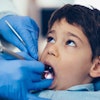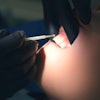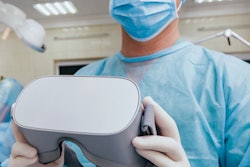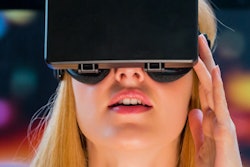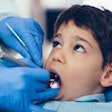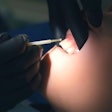Virtual reality (VR) simulation may be a useful tool for teaching dental students how to manage pediatric patient behavior, according to a study recently published in the European Journal of Dental Education.
Additionally, the intervention may be well received by dental students, boosting their confidence when treating children, the authors wrote.
“VR simulation was effective as an adjunct for the teaching of behaviour guidance of paediatric dental patients to dental students,” wrote the authors, led by Shijia Hu of the National University of Singapore (Eur J Dent Educ, August 19, 2025).
This three-year study recruited 181 third-year dental students from 2021 to 2023 and tested a validated VR scenario for teaching behavior guidance in children. The VR experience, shown from the perspective of a 4-year-old at his first dental visit, illustrated both poor and effective behavior guidance strategies, they wrote.
Students participated in lectures, small group seminars, and clinical training, with the VR intervention incorporated into the seminars. Self-administered questionnaires measured students’ confidence, comfort, and empathy before the seminar, immediately after, and following a three-month clinical rotation. The study had a response rate of 177 students at the postintervention phase and 92 students at the post-clinical phase.
Nearly all participants (96%) felt the VR intervention improved their ability to empathize with children. Seventy-five percent reported feeling more comfortable communicating, and 82% reported feeling more confident interacting with pediatric patients. Empathy scores rose significantly from pre-intervention to post-intervention (110.5 ± 11.12 vs. 114.94 ± 11.55, p = 0.002) and remained stable at the post-clinical phase (112.17 ± 11.41), they wrote.
Students also showed significant gains in confidence communicating (5.61 ± 1.88 vs. 6.33 ± 1.74, p < 0.001), interacting (5.83 ± 1.97 vs. 6.41 ± 1.7, p = 0.014), and performing dental procedures (4.44 ± 1.73 vs. 5.37 ± 1.71, p < 0.001), with improvements maintained after clinical rotations. From the post-clinical survey, 71% of students had experience with 3- to 8-year-old patients, and those with clinical experience showed higher empathy scores.
However, the study had limitations. There was no control group without VR intervention, so it was unclear whether the simulation was more effective than traditional teaching methods or standard videos, the authors added.
“Generally, the VR intervention was positively received by the dental students, with significantly increased subjective and objective educational outcome measures,” they wrote.

